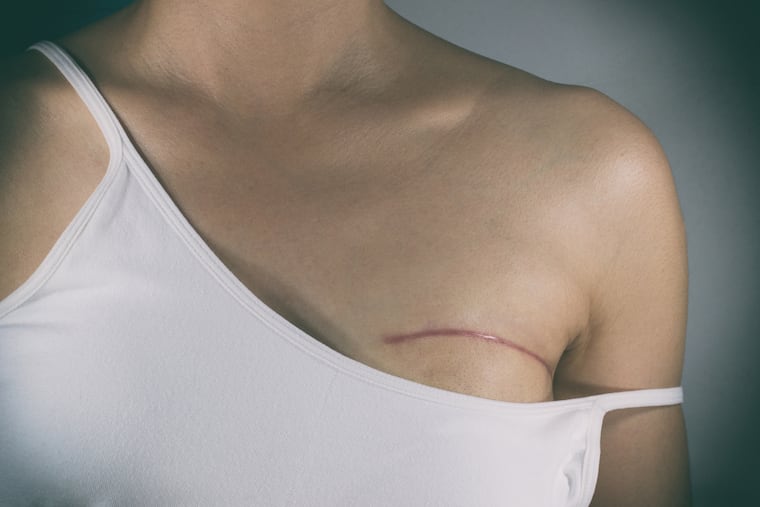Why breast cancer patients should know their options for reconstruction after surgery
As plastic surgeons, one of the most common misconceptions we hear is that breast reconstruction is a cosmetic procedure and will not be covered by insurance. But that is not the case.

As plastic surgeons, we often host community events for women diagnosed with breast cancer to raise awareness for breast reconstruction after treatment. At these events, one of the most common misconceptions we hear is that breast reconstruction is a cosmetic procedure and will not be covered by insurance. But that is not the case.
The Centers for Disease Control and Prevention estimates that 270,000 women will be diagnosed with breast cancer in 2019. Almost all of them will go on to have surgical treatment in the form of a lumpectomy (removal of the cancerous portion of the breast) or mastectomy (removal of the entire breast). The vast majority of mastectomy patients also have the ability to undergo breast reconstruction either at the same time of the surgery or at a later point.
Their reconstruction options fall into three distinct groups: implant based reconstruction, where a breast implant is used to recreate the shape and form of a natural breast; autologous reconstruction, where tissue from another part of the body is transferred to the chest to recreate the breast; and combination reconstruction, in which both an implant and autologous tissue are used. Because every patient is different, choosing the appropriate reconstruction path should be a joint effort between the patient and a board-certified plastic surgeon.
Under the Women’s Health and Cancer Rights Act (WHCRA) of 1998, insurance companies are required to cover all stages of breast reconstruction after mastectomy. That includes a balancing breast reduction/lift/implant on the other breast to achieve symmetry, when necessary. The passage of this federal mandate 20 years ago represented a monumental step forward, as breast reconstruction has been shown to improve body image, as well as social and sexual well-being. In the years following the WHCRA, the number of women seeking breast reconstruction after mastectomy increased significantly.
However, multiple reports show lower rates of reconstruction among African American and Latina women compared with Caucasian women, and among older women ( 55 and over) compared with younger women, leading to questions and concerns about whether women of color and women of advanced age are being left behind.
Although the premise of the Affordable Care Act was to increase the number of insured individuals, it is important to note that type of insurance may also play an important role in access to breast reconstruction services. For example, women with private insurance are more likely to get breast reconstruction after mastectomy compared with those with public insurance such as Medicare or Medicaid.
But we now understand that the reasons for these demographic differences are even more complex. By some estimates, 25 million people in the U.S. have limited or no access to a plastic and reconstructive surgeon. In some areas of the country, there is less than one plastic surgeon per 100,000 people.
Still, one recent study out of Penn Medicine found that women of color, regardless of their financial status, the type of insurance they hold, or how close they live to a plastic and reconstructive surgeon, still have lower rates of breast reconstruction than their Caucasian counterparts. This compels us to focus on patient-related factors such as breast reconstruction awareness, health literacy, cultural beliefs and preferences, and how they may differ between these groups.
Health-care professionals have the opportunity to make a positive impact on health literacy and awareness in underserved communities through outreach and patient engagement programs such as those implemented by the Division of Plastic Surgery at Penn Medicine. Notably, educational symposiums about general breast health, breast cancer, and breast reconstruction continue to reach and attract women and men from across Philadelphia. One such event will take place at Penn Medicine on Oct. 29 in celebration of National Breast Reconstruction Awareness (BRA) Day.
Ultimately the decision to have breast reconstruction after breast cancer treatment remains a personal choice, but widespread awareness of reconstruction options and equitable access to care is a goal for which we should all continue to strive.
Paris Butler is an assistant professor of surgery at Pennsylvania Hospital. Olatomide Familusi is a plastic surgery resident at Penn Medicine.